Exploring the realm of technical analysis through the lens of the Rate of Change (ROC) Indicator unveils a myriad of best practices that can significantly refine trading strategies.
From dissecting the intricate nuances of ROC calculation to seamlessly integrating it with other technical tools, the journey towards mastering ROC analysis is both enlightening and rewarding.
As we embark on this insightful expedition, we will uncover how ROC's dynamic nature can unlock a treasure trove of potential opportunities in the ever-evolving landscape of financial markets.
Understanding ROC Indicator Calculation
Analyzing the ROC indicator calculation provides investors with a quantitative insight into the rate of change of a security's price over a specific period, aiding in the assessment of bullish or bearish market sentiment. The ROC calculation formula, [(Current Close – Close n periods ago) / Close n periods ago] X 100, is instrumental in determining the momentum of a security. By using 'n' to represent the number of periods ago for comparison, typically 14, 9, 25, or 200, investors can gauge the price movement relative to historical data.
ROC values above zero signify bullish sentiment, indicating an upward price momentum, while values below zero suggest bearish sentiment, signaling a downward price momentum. The zero line in ROC serves as the centerline, enabling investors to identify shifts in market sentiment. However, the ROC indicator does not have predefined overbought or oversold levels. Investors often determine overbought or oversold zones based on prior extreme levels when utilizing the ROC indicator in technical analysis.
Interpreting ROC Indicator Readings
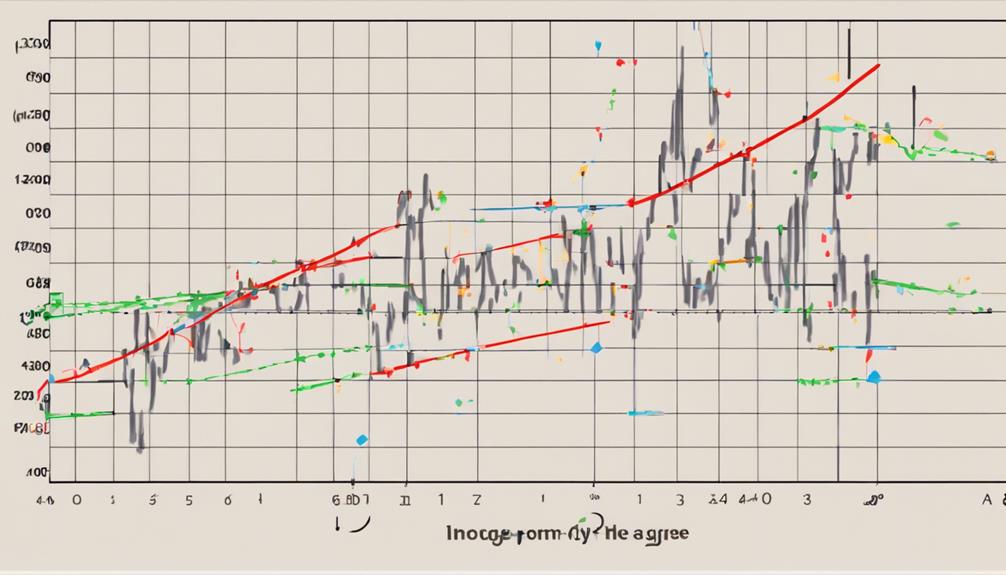
When interpreting ROC indicator readings, investors can gain valuable insights into the momentum and potential trend changes of a security's price movement based on the direction and magnitude of the Rate of Change values.
- Positive ROC values indicate bullish momentum in the price of a security.
- Negative ROC values suggest bearish sentiment in the price movement.
- ROC above zero line signifies positive price acceleration, while ROC below zero line indicates negative acceleration.
- Understanding overbought and oversold conditions through ROC readings is essential for effective trading decisions.
Incorporating ROC With Momentum Analysis
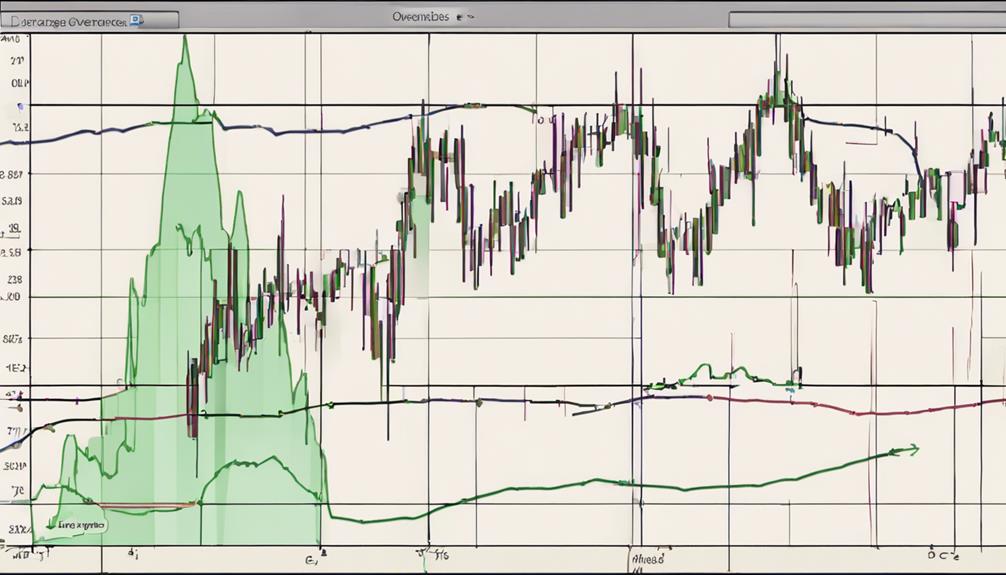
The integration of Rate of Change (ROC) with momentum analysis provides traders with valuable insights into the speed and strength of price movements. By combining ROC with other momentum indicators, traders can gain a comprehensive understanding of market trends and potential trade opportunities.
Understanding the interaction between ROC and other momentum indicators can enhance trading decisions and improve overall market timing.
ROC and Momentum Interaction
Integrating the Rate of Change (ROC) indicator with Momentum analysis offers valuable insights into market dynamics and trend behavior.
- Understanding momentum: ROC and Momentum indicators provide insights into market momentum and trend strength.
- Signaling trend reversals: Centerline crossovers in ROC and Momentum indicators can indicate potential trend reversals.
- Enhancing analysis: ROC can be used in conjunction with other momentum indicators like MACD and RSI for comprehensive analysis.
- Deepening understanding: Incorporating ROC with Momentum analysis enhances the understanding of price movements and trend dynamics.
Benefits of ROC Integration
An optimal approach to enhancing market analysis involves integrating the Rate of Change (ROC) indicator with Momentum analysis for a comprehensive evaluation of trend dynamics and price movements. By combining ROC with other momentum indicators like MACD and RSI, traders gain deeper insights into the speed of price changes and can better identify potential trend shifts and market momentum.
This integration not only enhances the ability to make informed trading decisions but also offers a more holistic view of market dynamics when combined with volume analysis. Utilizing ROC alongside price action analysis further refines the understanding of market trends, providing a robust foundation for strategic decision-making in the dynamic world of trading.
Combining ROC With Other Technical Tools
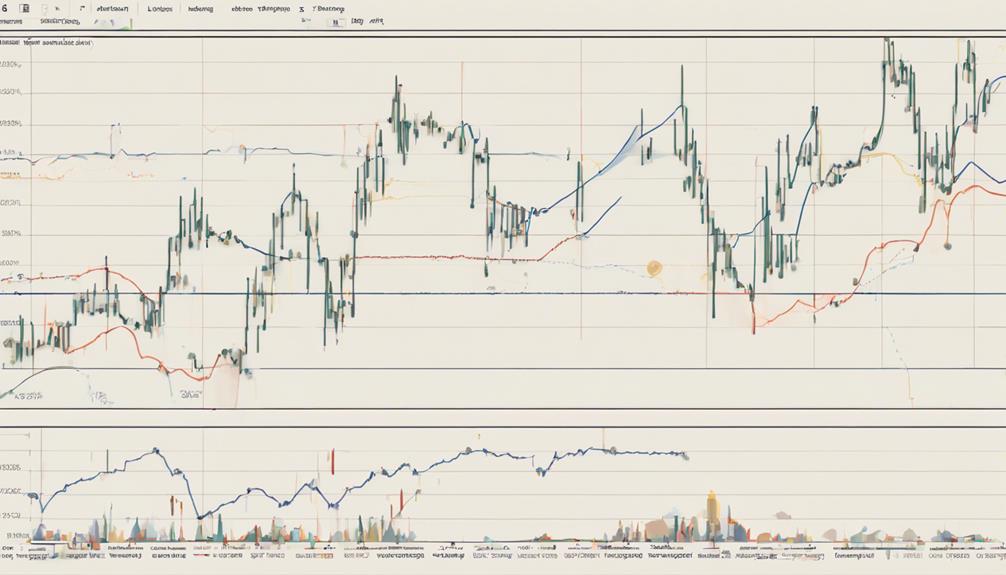
When exploring the integration of ROC with other technical tools, key combinations such as ROC and Moving Averages, ROC and RSI, and ROC and MACD come into focus.
These pairings offer traders a multifaceted approach to analyzing price movements and identifying potential trading opportunities.
ROC and Moving Averages
Combining the Rate of Change (ROC) indicator with moving averages enhances technical analysis by providing additional confirmation of trend directions and refining trading signals.
Popular moving averages like the 50-day or 200-day can be used in conjunction with ROC for smoother analysis.
Using moving averages alongside ROC helps filter out noise and provide clearer entry and exit points.
Moving averages can help validate ROC signals by providing additional confirmation of price trends.
The synergy between ROC and moving averages can improve the accuracy of trading decisions and reduce false signals.
ROC and RSI
Building on the enhanced technical analysis provided by combining the Rate of Change (ROC) indicator with moving averages, the integration of ROC and the Relative Strength Index (RSI) offers further insights into market momentum and trend confirmations.
Both ROC and RSI are powerful momentum indicators that assess price strength and market momentum. While RSI considers both upward and downward price changes to determine overbought or oversold conditions, ROC focuses solely on the speed of price movements in one direction.
ROC and MACD
The integration of the Rate of Change (ROC) indicator with the Moving Average Convergence Divergence (MACD) can enhance technical analysis by providing traders with more comprehensive insights into market dynamics.
- Combining ROC with MACD can provide more robust trading signals.
- MACD crossovers can be validated by ROC movements for enhanced trading decisions.
- Using ROC and MACD together can help confirm trend reversals and entry/exit points.
- Integrating ROC and MACD in technical analysis can offer complementary insights into market momentum.
Implementing ROC in Trading Strategies
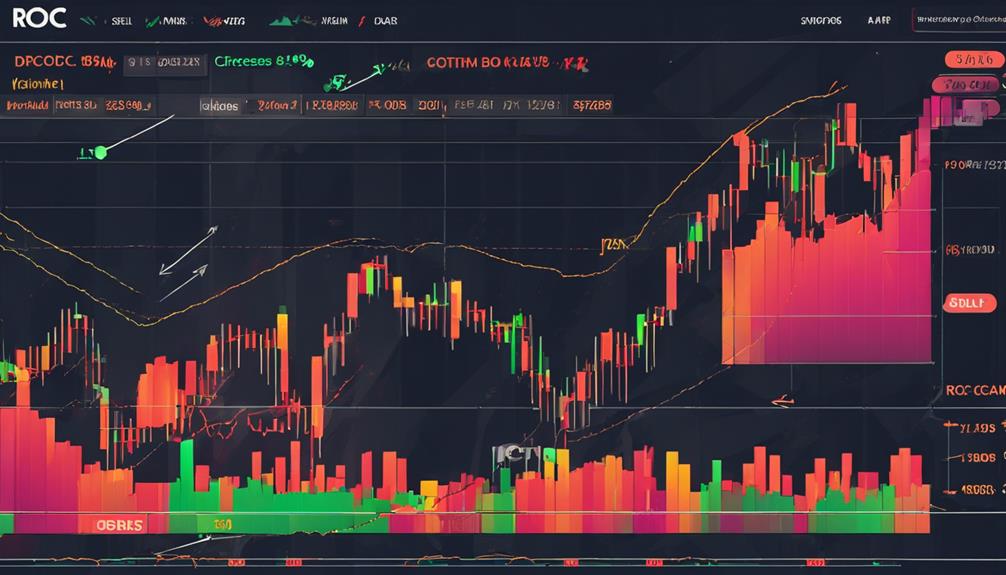
Utilizing the Rate of Change (ROC) calculation in trading strategies involves determining the percentage change between the current price and the price from n periods ago to gauge market momentum and potential trade opportunities.
Traders can use ROC to identify overbought or oversold conditions in the market, signaling potential reversal points. Incorporating ROC in breakout strategies involves observing zero line crosses to confirm new trend directions, indicating potential entry or exit points.
Divergence analysis with ROC helps traders in timing market turning points by comparing price movements with ROC movements, providing insights into potential shifts in market sentiment.
Additionally, combining ROC with other technical indicators like Stochastics or Moving Averages can offer enhanced trend confirmation and improve the accuracy of trade signals.
Maximizing ROC for Trade Execution
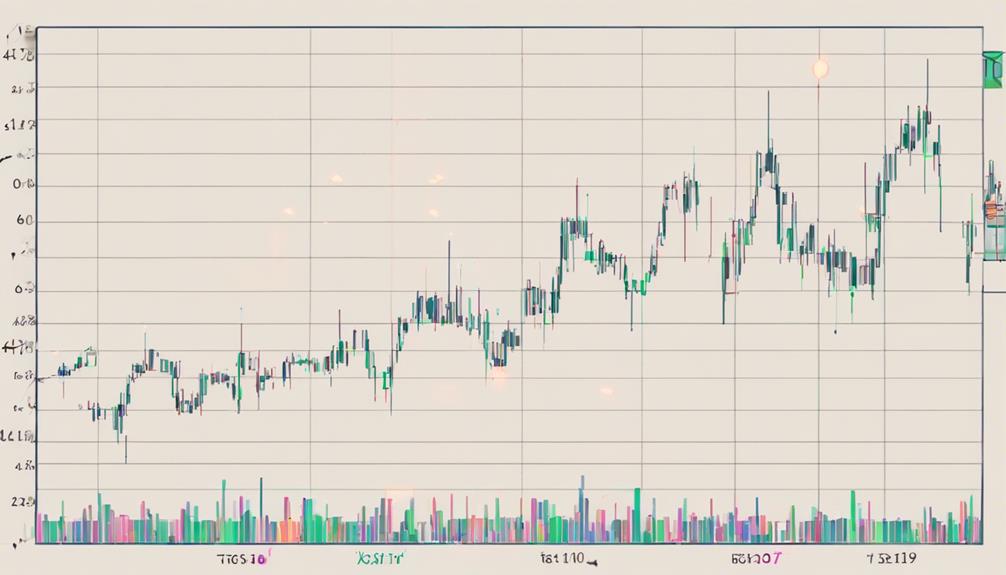
Maximizing trade execution efficiency through strategic utilization of the Rate of Change (ROC) indicator is crucial for enhancing market analysis and decision-making processes. When focusing on maximizing ROC for trade execution, consider the following key points:
- Momentum Shifts: Utilize the ROC indicator to confirm momentum shifts in the market, which can help in identifying optimal entry and exit points.
- Overbought and Oversold Conditions: Use ROC to pinpoint overbought and oversold conditions, enabling traders to make informed decisions on when to enter or exit trades.
- Crossovers: Timing trades based on ROC crossovers, such as when the ROC line crosses above or below its moving average, can enhance the precision of trade entries and exits.
- Combining with Other Indicators: Incorporate ROC with other technical indicators like moving averages to strengthen trade signals and improve overall trade execution accuracy.
Fine-Tuning ROC Trading Techniques
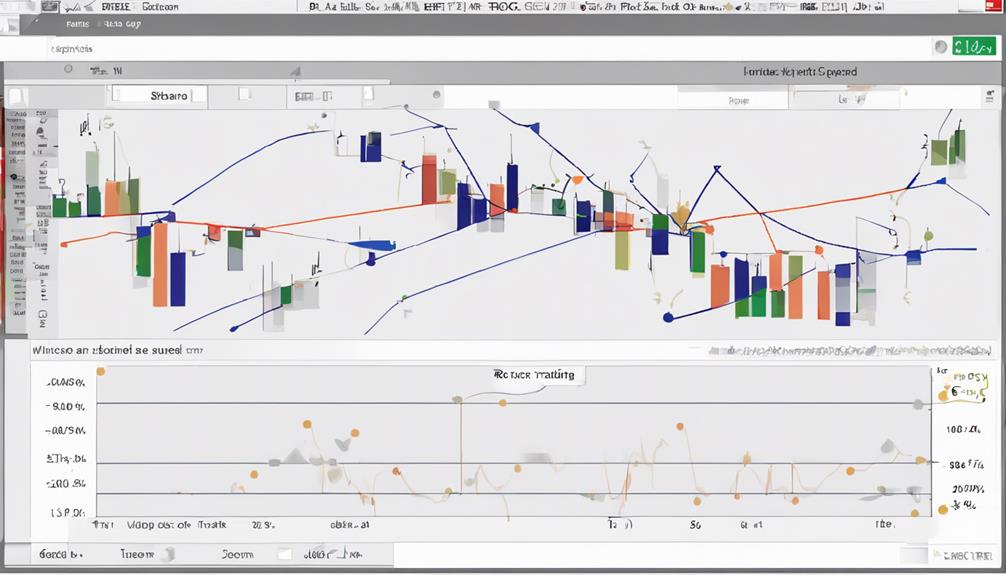
Fine-tuning ROC trading techniques involves several key steps:
- Optimizing strategies, refining entry and exit points, and adjusting indicator parameters for enhanced performance.
- Experimenting with different ROC periods, combining it with complementary indicators, and testing strategies across various market conditions.
- Traders can fine-tune their approach to capitalize on momentum shifts and market trends efficiently.
- Monitoring ROC for divergences and utilizing its signals for precise timing can further aid in improving trade execution and overall profitability.
ROC Trading Strategies
When refining ROC trading techniques, optimizing the period length is crucial for achieving more precise signals. It is essential to consider various factors when developing ROC trading strategies to enhance their effectiveness.
- Implement filters based on market conditions to fine-tune ROC signals.
- Combine ROC with other indicators like moving averages for additional confirmation.
- Backtest different ROC parameters to identify optimal settings for specific market conditions.
- Monitor ROC divergences from price action to improve timing for entry and exit points.
Timing Entry and Exit
To optimize the effectiveness of ROC trading techniques, a strategic focus on timing entry and exit points is paramount in refining trade execution. Utilizing Price Rate of Change (ROC) in conjunction with moving averages can assist traders in determining opportune moments to enter or exit positions.
By observing ROC crossovers with moving averages, traders can fine-tune their entry and exit strategies, enhancing timing accuracy. This approach provides a systematic method for aligning trades with potential shifts in momentum.
Moreover, incorporating volume analysis alongside ROC signals can offer further confirmation for making informed entry and exit decisions. By adjusting entry and exit points based on these indicators, traders can strive to capitalize on market movements effectively.
Adjusting Indicator Parameters
Adjusting the parameters of the ROC indicator involves modifying the number of periods utilized in the calculation, enabling traders to tailor the indicator's responsiveness to market dynamics and their specific trading approach.
- Experiment with different period lengths to fine-tune ROC trading techniques.
- Customize the sensitivity of the ROC indicator to price changes.
- Gain insights into the indicator's responsiveness by testing various period settings.
- Optimize trading signals and decision-making by adapting ROC parameters based on historical data analysis.
Leveraging ROC for Market Analysis
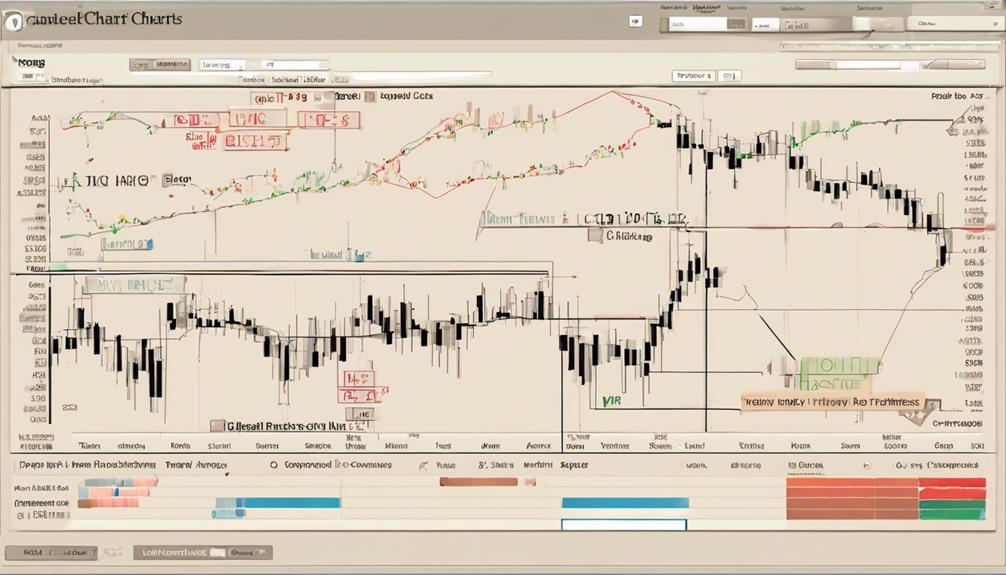
Utilizing the Rate of Change (ROC) indicator in market analysis offers traders a valuable tool for gauging the speed and momentum of price movements.
The ROC indicator calculates the percentage change in price over a specified period, helping traders identify overbought and oversold levels in the market. By comparing current prices with prices from a set number of periods ago, traders can assess the strength of price momentum. This information can be crucial for making informed trading decisions.
Traders often use ROC to spot divergences, confirm trends, and time their trades effectively. Additionally, ROC can assist in confirming breakout patterns and identifying new trend directions through zero line crosses.
When combined with other technical analysis tools, ROC can enhance market analysis by providing more robust trading signals. Overall, leveraging the ROC indicator in market analysis can significantly improve a trader's ability to interpret price movements and make informed trading decisions.
Adapting to Limitations of ROC
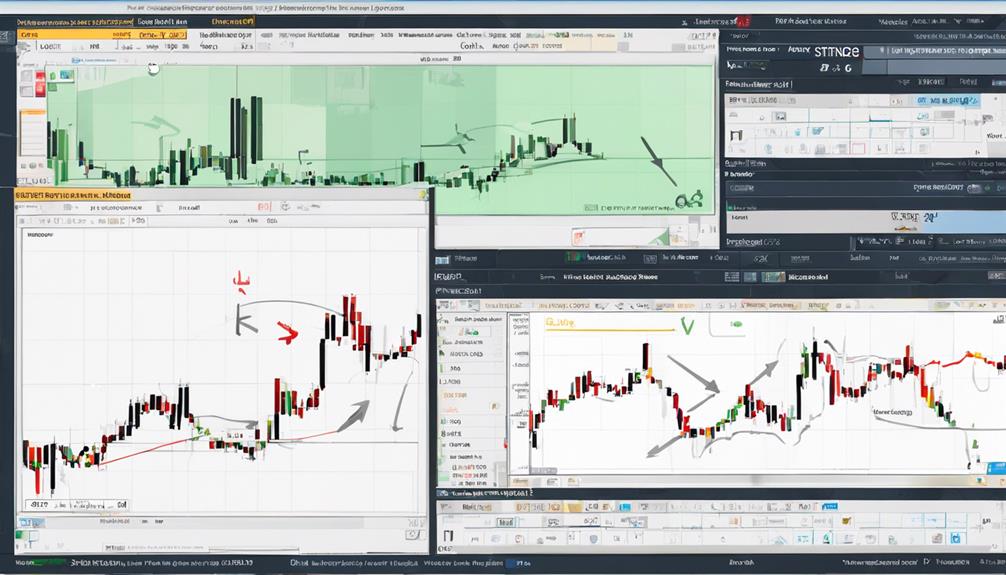
In navigating the complexities of market analysis, understanding and accommodating the limitations of the Rate of Change (ROC) indicator is essential for traders seeking to make informed decisions.
It is crucial to recognize that ROC may generate false signals in choppy or sideways markets, potentially leading to misinterpretations. Additionally, traders should be aware that ROC can lag behind sudden price movements, necessitating confirmation from other indicators to avoid delayed responses to market shifts.
Adapting to these limitations requires adjusting trading strategies based on prevailing market conditions, as ROC's effectiveness can vary significantly depending on the market environment.
To enhance the accuracy and reliability of signals, traders should utilize ROC in conjunction with other analysis tools, leveraging a comprehensive approach to market analysis that mitigates the shortcomings of ROC and provides a more robust foundation for decision-making.
Optimizing ROC for Enhanced Performance
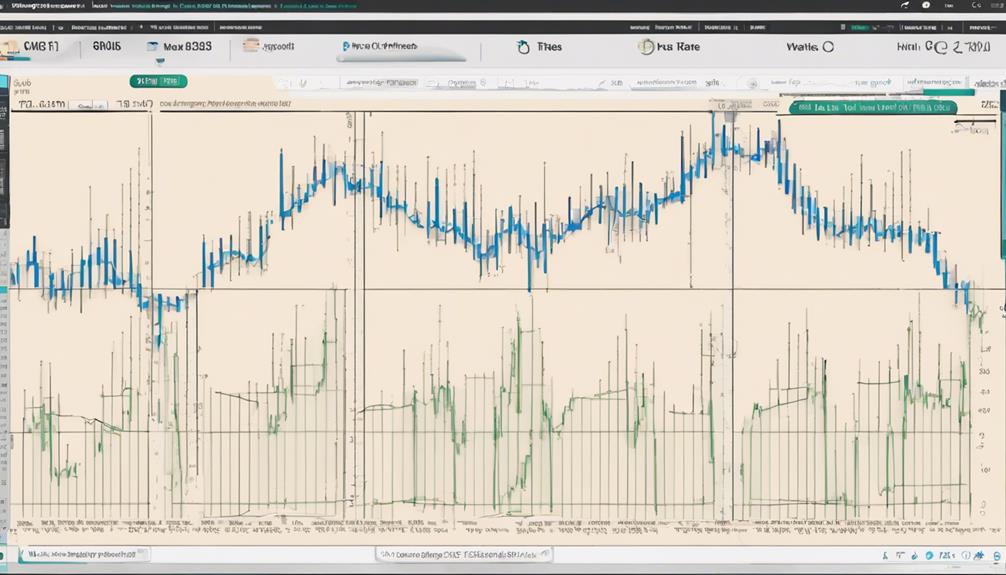
Given the nuances of the Rate of Change (ROC) indicator and its implications for trading decisions, optimizing ROC for enhanced performance involves strategic adjustments tailored to specific market conditions and trading objectives.
Adjusting the period length in ROC calculation is a key factor in optimizing its performance. By testing various period lengths such as 9, 14, or 25, traders can determine the most effective setting for their specific trading strategies. It is essential to consider market conditions, asset volatility, and desired trading frequency when optimizing ROC parameters.
Fine-tuning ROC settings through backtesting can help identify the optimal configuration for generating reliable trading signals. Additionally, combining ROC with other technical indicators and confirming signals across multiple timeframes can further enhance the performance and reliability of trading strategies.
How Does the ROC Indicator Compare to Other Technical Analysis Indicators in Terms of Best Practices?
When it comes to comparing ROC with other technical analysis indicators, it’s important to consider best practices. While some indicators may provide different insights, ROC can offer a unique perspective on price momentum. By understanding how ROC aligns with other indicators, traders can make informed decisions.
Frequently Asked Questions
How Do You Interpret ROC in Technical Analysis?
In technical analysis, interpreting ROC involves assessing momentum shifts. Positive ROC values indicate bullish sentiment, while negative values signify bearish sentiment. Traders monitor ROC crossings above or below the zero line for momentum changes and potential trend reversals.
How Do You Trade With ROC Indicator?
To trade with the ROC indicator, identify accelerating trends by observing ROC movements above or below the zero line. Utilize crossovers with previous highs or lows for potential trend changes. Combine ROC with moving averages and other indicators for comprehensive analysis and improved decision-making.
What Is the Difference Between ROC and RSI Indicator?
The ROC and RSI indicators serve distinct roles in technical analysis. ROC measures price change percentages over periods, focusing on momentum direction, while RSI compares recent gains and losses to identify overbought or oversold conditions, aiding traders in market analysis.
What Is the Best Technical Analysis Indicator?
The best technical analysis indicator varies depending on individual trading styles and market conditions. It is crucial to test and combine various indicators to find what works best for your strategy, enhancing signal accuracy and overall trading success.
Conclusion
In conclusion, mastering the 10 best practices for ROC Indicator technical analysis is essential for successful trading decisions.
By understanding the calculation and interpretation of ROC, incorporating it with other technical tools, and fine-tuning trading techniques, traders can optimize performance.
For example, a trader utilizing ROC in conjunction with Moving Averages to confirm trend reversals and identify entry points can increase the accuracy of their trades and maximize profits in the market.
